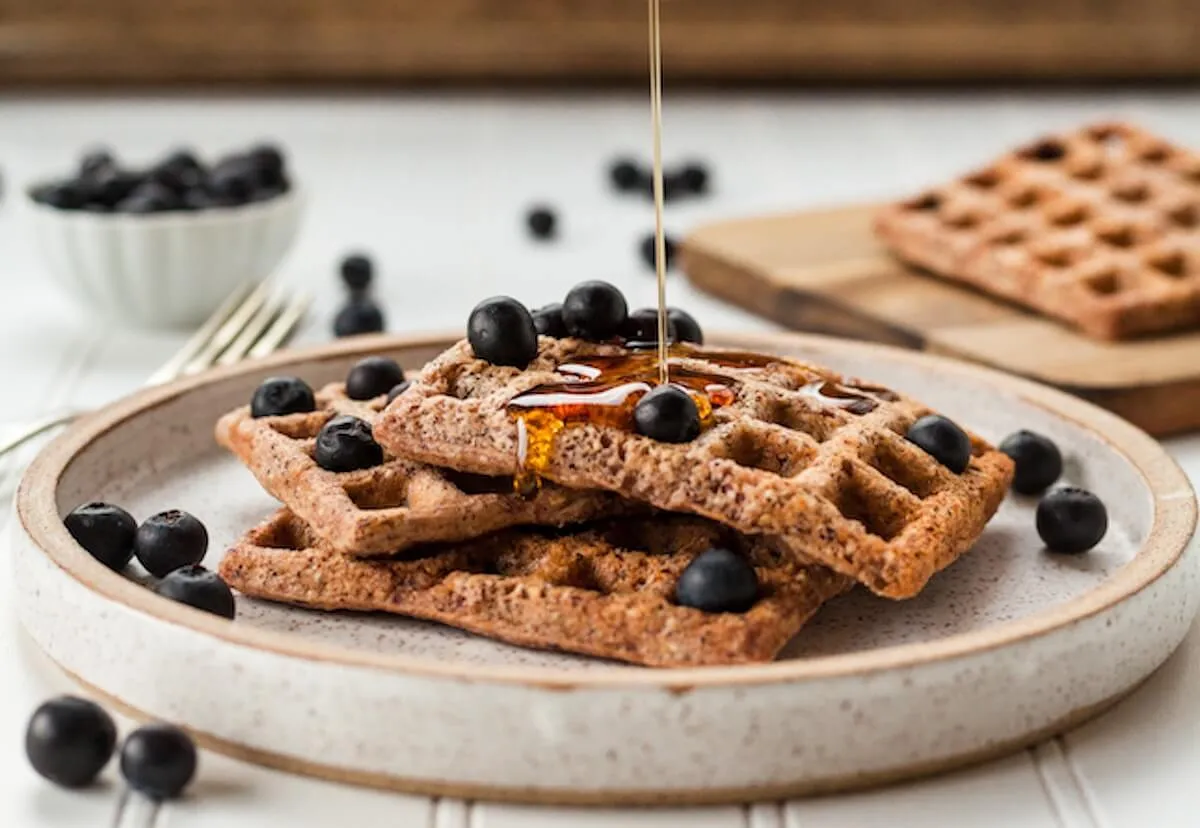he media gives sugar a bad rap, and for good reason. Too many added sugars can have consequences, like increasing the risk of metabolic syndrome (high cholesterol and insulin resistance), inflammation, and high blood sugar levels. But what the media doesn’t tell you is that sugar is an essential fuel source for nearly all tissues in your body.
High-quality carbohydrates provide the body with fuel, fiber, and essential nutrients that support overall health. During digestion, carbohydrates are broken down into smaller sugar molecules that are easier to transport throughout the body. These molecules are glucose, sucrose, fructose, and lactose. Your body relies on these smaller molecules every day for energy to function properly.
In this article, you’ll learn:
- Why sugar is essential.
- The different types of sugar and health effects.
- How natural sugars support metabolic health.
Many people fear sugar, but with some education, you can learn how to successfully incorporate sugar into your diet. So, let’s start learning!
{{mid-cta}}
Is Sugar Healthy or Unhealthy?
There is so much confusion about how sugar affects your health. It continues to be a huge topic in nutrition. Here are some basic essentials you need to know to fully understand how sugar impacts your health:
- Carbohydrates are metabolized into smaller and easier-to-digest molecules, including sugar.
- Sugar is the main source of fuel for your organs (including your brain), muscles, and tissues.
- The quality and quantity of sugar consumed can increase or decrease your risk of metabolic diseases.
- Too much sugar can have adverse effects on your health.
We need sugar to function, but most of us could benefit from being more selective about where and how much sugar we consume.
What Is Added Sugar?

There are two primary places where the bulk of your sugar intake comes from in your diet: natural sources and manufactured sources. The natural sources of sugars are found in three foods:1
- Fruits (contains fructose)
- Grains contain maltose (two glucose molecules bonded together)
- Dairy products (contain lactose)
Choosing foods with natural sources of sugar is recommended. These foods also offer protein, healthy fats, and fiber, which slow down sugar digestion and reduce the chances of a blood sugar spike.
Added sugars are incorporated into food and beverages to enhance sweetness and palatability. It sounds harmless, but the amount of sugar added can be very high (probably surpassing the amount of sugar you would add to your cooking).
Consuming large amounts of high glycemic foods with added sugars can negatively impact your health and cause high blood sugar spikes. Examples of items with added sugars include:
- Baked goods, including pies, pastries, cakes, and cookies (these are often high-fat too).
- Candies and chocolates.
- Different condiments and sauces.
- Flavored and sweetened dairy products.
- Beverages include sodas, juices, specialty coffee drinks, and cocktails (and mocktails).
Anytime a sweetening agent is added to food or drink, it’s classified as an added sugar. Popular examples include high fructose corn syrup, white and brown sugar, maple syrup, and molasses. Be wary of these ingredients because it could be a sign that the product will push you beyond your daily sugar recommendations.
<p class="pro-tip"><strong>Learn about </strong> <a href="/blog/what-is-sucrose">the science behind sugar</a>.</p>
Do Our Bodies Need Sugar?
After digesting a carbohydrate, 80% of the finished molecules will be sugar (scientifically known as glucose). In this small form, the sugar molecules can easily travel throughout the body. During physical activity, your body can also use sugar for quick energy.1
The glucose molecules need to be available in abundance because they are involved with several life-supporting tasks in the body, including supplying your brain with consistent energy to function.2
The major organs involved in glucose metabolism and regulation include your liver, pancreas, adrenal gland, thyroid gland, and anterior pituitary gland. Uptake of glucose occurs in all the tissue cells in your body.
Does Sugar Make You Fat?
Most of us will not need to use glucose after every meal right away. This is reserved for athletes who are in a race and are actively burning through their energy stores.
Your liver will convert unused glucose into glycogen and store approximately 100g of glycogen for an emergency (like activating your fight or flight response). Any excess glycogen is converted into triglycerides, a type of fat in the blood. High triglyceride levels can increase your risk of non-alcoholic liver disease.3, 4
In the Western world, many of us exceed our “storage space” because of two simultaneous factors: we eat large amounts of foods high in simple sugars and do not exercise enough to burn through these available glucose stores.
If both lifestyle patterns are present, too much sugar can lead to weight gain. If weight loss is your goal, limiting added sugars may help.1
How Sugar Affects Metabolic Health
Prolonged levels of high sugar intake can negatively impact your metabolic health and lead to:5, 6, 7
- Insulin resistance: High intake of added sugars has been linked to hyperglycemia (high blood sugars) and decreased functionality or secretion of the insulin hormone that helps regulate blood glucose. When insulin levels increase, but the receptors on your cells don’t respond correctly, blood sugar remains high.
- Type 2 Diabetes: A diet high in added sugars may increase your risk of developing type 2 diabetes.
- Cardiovascular Disease (CVD): A greater intake of added sugars has been linked to an increased risk of CVD and high lipids.
- Obesity: Consuming sugar-sweetened beverages and other refined carbohydrates is a risk factor for excess body fat and obesity.
Eating foods high in added dietary sugar can displace more nutritious options from your diet. For example, drinking a premade smoothie may sound like a convenient and healthy option, but it actually can be high in added sugars. Filling up on a sweetened smoothie can sidetrack you from eating a more blood-sugar-friendly meal that is rich in fiber and will have less impact on your blood glucose levels.
How Much Sugar Is Too Much?
The 2020-2025 Dietary Guidelines for Americans suggest that anyone over the age of two should limit their added sugar intake to 10% of their total caloric intake.
For example, if an adult eats approximately 2000 calories per day and one teaspoon of sugar provides approximately 20 calories, their added sugar intake should be ten teaspoons or less daily.
How To Minimize Added Sugar On Your Diet
The best way to make sure your added sugar content is under control is to start reading food labels.
Always check the serving size first to ensure the food portions you eat align with the designated serving size. You may need to make some adjustments based on the serving size compared to how much you eat.
Read through the ingredients for commonly added sugars: white sugar, brown sugar, maple syrup, honey, molasses, glucose syrup, and high fructose corn syrup.
If the sugar content surpasses 20% DV, you will likely exceed the recommended daily sugar intake (assuming you are eating other foods with sugar that day, too). Try to find an alternative option with a lower sugar content. If you can’t find anything that fits your requirements, consider making the product at home from scratch.
How To Eat Sugar In Healthy Ways

There are safe and nutritious ways to include sugar in your diet, and it starts with fresh fruits! Fruits taste delicious, plus they are high in other important nutrients like antioxidants. The Dietary Guidelines for Americans recommends adults consume 1.5 to 2.5 cups of fruit each day, depending on calorie needs.
Try grilling or baking your fruit to increase the “wow” factor. Include spices and garnishes to further elevate your fruit and take it up a notch. Popular options include:
- Grilling pineapple slices and dusting with cinnamon.
- Baking peaches with toasted oatmeal, cinnamon, and a pinch of nutmeg.
- Poach pears in a spiced broth and serve over unflavored Greek yogurt and chopped nuts.
- Serve fresh mango slices with avocado, and add a pinch of paprika or chili powder for a kick.
- Cook down balsamic vinegar and strawberries for a punchy dish and serve over unflavored Greek yogurt.
Cooking your fruits is an excellent technique to draw out more sophisticated flavors from your fruit. But you can also freeze your fruit for a summer-appropriate fun twist. Popular options include pitted cherries, berries, and grapes.
Final Takeaway
Your body will break down carbohydrates into smaller sugar molecules because they are easier to transport around the body. Your vital organs, muscles, and even your brain rely on sugar for energy to function. However, too much-added sugar can negatively impact your blood glucose levels, body weight, and liver health.
Familiarizing yourself with how much sugar you can take a bit of practice with, but it’s not something you’ll need to do every single day.
Prioritize label-reading on prepackaged foods, which are known to be sneakily high in added sugars. Keep an eye out for common sweetening ingredients (sugar, honey, molasses, high fructose corn syrup, glucose syrup, maltose), and try to keep your intake of these foods as low as possible.
If you want more tips on diet and lifestyle changes, you can work with a healthcare professional or check out the rest of the Signos blog now!
<p class="pro-tip"><strong>Keep reading: </strong> <a href="/blog/for-the-chocolate-lovers">Health Benefits of Dark Chocolate Backed by Science</a>.</p>
Topics discussed in this article:
References
- Hantzidiamantis PJ, Lappin SL. Physiology, Glucose. [Updated 2021 Sep 20]. In: StatPearls [Internet]. Treasure Island (FL): StatPearls Publishing; 2022 Jan-. Available from: https://www.ncbi.nlm.nih.gov/books/NBK545201/
- Mergenthaler, P., Lindauer, U., Dienel, G. A., & Meisel, A. (2013). Sugar for the brain: the role of glucose in physiological and pathological brain function. Trends in neurosciences, 36(10), 587–597. https://doi.org/10.1016/j.tins.2013.07.001
- Jensen, J., Rustad, P. I., Kolnes, A. J., & Lai, Y. C. (2011). The role of skeletal muscle glycogen breakdown for regulation of insulin sensitivity by exercise. Frontiers in physiology, 2, 112. https://doi.org/10.3389/fphys.2011.00112
- Tomizawa, M., Kawanabe, Y., Shinozaki, F., Sato, S., Motoyoshi, Y., Sugiyama, T., Yamamoto, S., & Sueishi, M. (2014). Triglyceride is strongly associated with nonalcoholic fatty liver disease among markers of hyperlipidemia and diabetes. Biomedical reports, 2(5), 633–636. https://doi.org/10.3892/br.2014.309
- Yang, Q., Zhang, Z., Gregg, E. W., Flanders, W. D., Merritt, R., & Hu, F. B. (2014). Added sugar intake and cardiovascular diseases mortality among US adults. JAMA internal medicine, 174(4), 516–524. https://doi.org/10.1001/jamainternmed.2013.13563
- DiNicolantonio, J. J., & OKeefe, J. H. (2017). Added sugars drive coronary heart disease via insulin resistance and hyperinsulinaemia: a new paradigm. Open heart, 4(2), e000729. https://doi.org/10.1136/openhrt-2017-000729
- Luger, M., Lafontan, M., Bes-Rastrollo, M., Winzer, E., Yumuk, V., & Farpour-Lambert, N. (2017). Sugar-Sweetened Beverages and Weight Gain in Children and Adults: A Systematic Review from 2013 to 2015 and a Comparison with Previous Studies. Obesity facts, 10(6), 674–693. https://doi.org/10.1159/000484566




.svg)


.webp)


.webp)



.webp)
.svg)
.svg)
.svg)
.svg)
.svg)
.svg)
.svg)
